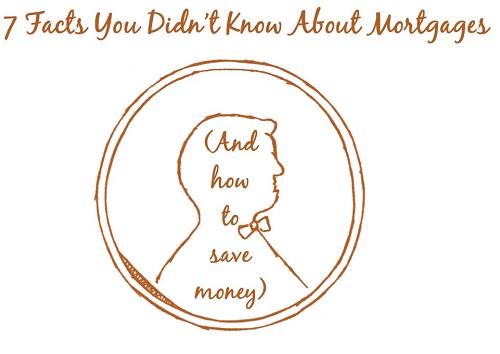7 Facts You Didn’t Know About Home Mortgages
Posted by Lee and Katherine Keadle on Wednesday, May 25th, 2016 at 3:04pm.

You don’t have to be a mortgage guru to save money on your next home purchase. We’ve put together this list of lesser known facts and tips so that you can gleam some of the best advice we’ve learned in our 12+ years of real estate experience!
- You don’t need a 20% down payment to eliminate PMI. Private Mortgage Insurance generally costs $65-256 per month. In order to reduce their monthly costs, many buyers try to put down 20% or more to eliminate PMI. However, if you don’t have that much cash to put down, you can opt for a single premium option where you pay a one time amount (and never have to make that PMI payment again). Over the life of the loan, this route usually costs 1/3 of the total amount compared to making the old fashioned monthly payment.
- If you already have a mortgage and know that you have 20% equity in your home, you should be able to stop paying Private Mortgage Insurance. The trick here is that you have to initiate it with your bank. Some borrowers assume that after a certain amount of time, the PMI payments will automatically stop. However, your bank will continue collecting this payment until you contact them! If you’re unsure about whether you have 20% equity, contact your Realtor to see what your home is worth. This estimate won’t be a true appraisal, but it will give you the most accurate number before you fork out the cost of an appraiser.
- Conventional mortgages are obtainable with as little as 3% down. A few years ago, only FHA loans could offer such low down payment options, but now you’ll find some conventional options with less money out of pocket (and fewer hoops to jump through).
- Lower mortgage rates don’t always make a loan more affordable. The true cost of getting a mortgage is more than simply the APR or Annual Percentage Rate. Some lenders promise rates that sound too good to be true and then hike up points or initiation fees to pay for the difference. In other words, know that you can pay for a lower interest rate – but it will cost you. This is why it’s a good idea to get estimates from 2 lenders so that you can compare costs.
- The daily interest rate you hear doesn’t necessarily apply to you. When buyers ask “What’s the interest rate today?” the answer is more complicated than a simple percentage. As we just mentioned, rates change depending on the points that a borrower pays among other factors such as credit scores. Although rates do in fact change daily (which is why your lender might suggest locking in a rate on a particular day), know that you could be paying a different percentage than you hear in the news or in your initial conversation with your bank.
- Refinancing might still be an option even if you owe more than your home is worth. Most real estate markets around the United States have rebounded with prices that are higher than averages before the housing downturn. However, in some areas homeowners are still struggling to sell or refinance their home. If you’re looking to refinance in order to reduce your interest rate and monthly payment, you should be able to find a lender who can make this happen – even if you’re underwater with your mortgage.
- Shorter term loans save money! The 30 year mortgage is a staple, but you’ll pay a lot more interest with these longer lasting loans. A lot. Talk with your lender to see how much more a monthly payment would be for a 15 or 20 year loan compared with a 30 year. For example, on a $200,000 home, this strategy can save up to $59,000 with a 20 year loan and $86,000 compared to a 15 year!


